Why I Don’t Recommend The Look for Less
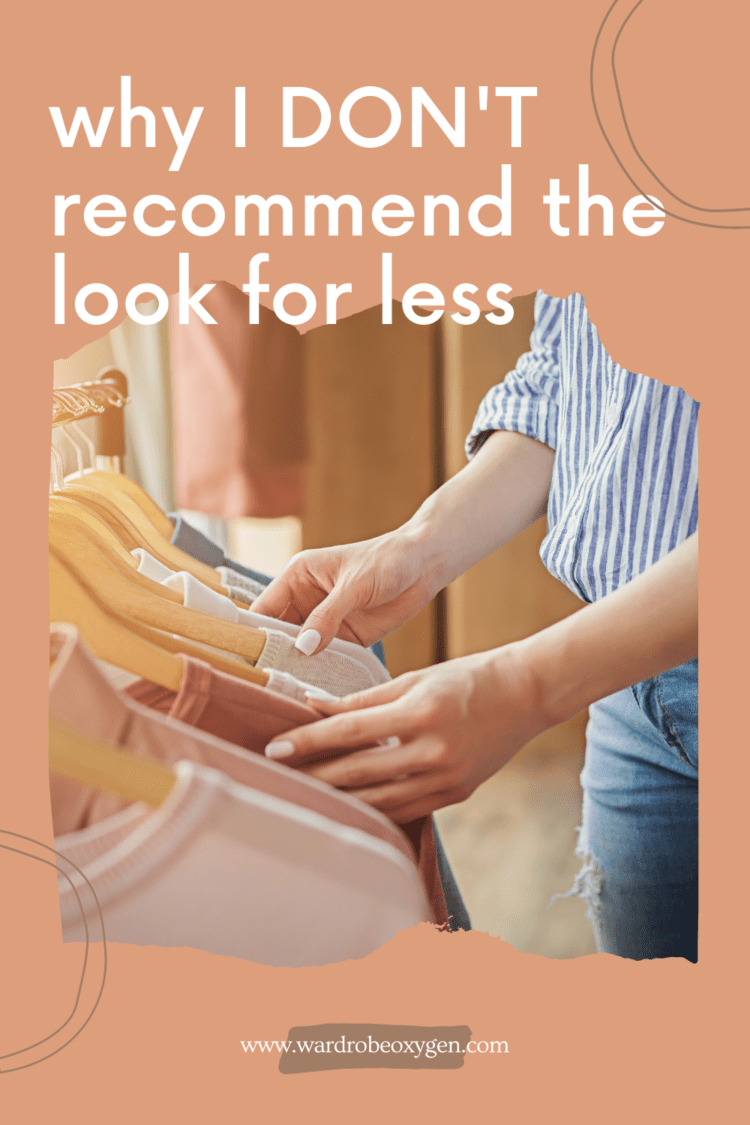
One of the most popular questions I receive over and over is how to get the look for less. A reader sees a designer garment, loves the style, but wants to achieve it on a budget. I know many influencers and style blogs focus on getting the look for less, but Wardrobe Oxygen will never do that. Let me explain…
Why I Don't Recommend the Look for Less
I don’t believe in getting the look for less, because it NEVER WORKS. While you may find the same silhouette, the same color, or the same trendy detail as the more expensive item, it’s not going to be the same. Not only that, but what made it great is usually lost with the loss of dollars.
But Isn't a Lot of High-End Fashion Overpriced?
Yes, sometimes items are ridiculously overpriced purely because of what designer crafted them. You can't tell me that a Supreme t-shirt is so better crafted than a Hanes one that it deserves such a high price. You're not paying for higher-quality cotton, you're paying for the Supreme label. And since 2020, some brands and designers, even higher-end ones, have looked to cut corners to stay profitable and it has created inconsistent quality.
But more often than not, when you compare a designer dud to the fast fashion “dupe” you will see that there is usually a stark difference in quality, fit, design, and manufacturing. Let me break this down for you…
Breaking Down the Look for Less
Let's imagine it's fall. You want to incorporate a couple of current trends into your wardrobe that has an autumnal feel. A great choice is a tie-neck blouse in a dark red color. The tie-neck blouse has been stylish for a few seasons now.
This is a garment that really runs the gamut in regard to price. When researching this piece, I saw everything from $24 to $2,000 for such a blouse. But what I also saw was that when I looked at the details of each blouse, I saw you get what you paid for.
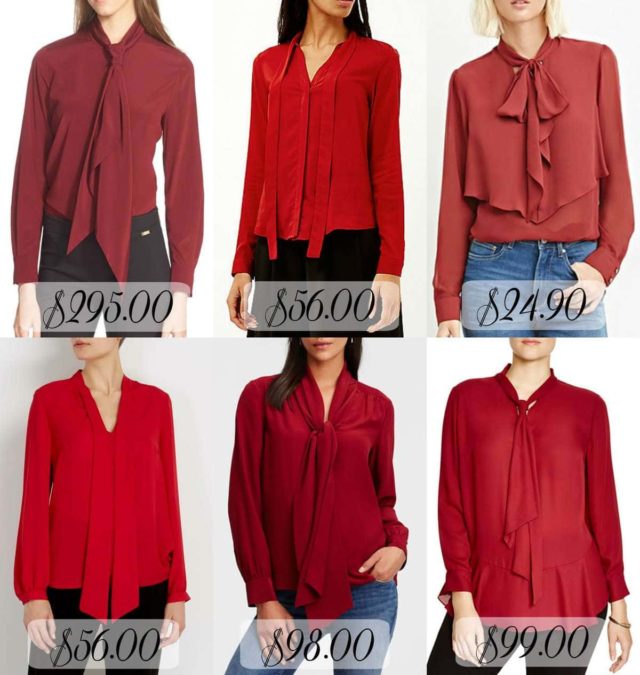
Here are six red tie-neck blouses that were available at popular online retailers at the time of originally writing this article. The prices range from $25 to $295 and at first glance, they don’t seem that drastically different. Without trying them on or seeing them in person, you may feel you truly can get the look for less. But looks can be deceiving.
Let’s first examine the $295 blouse. The website stated it is made from 93% silk and 7% spandex crêpe de Chine. It has a detachable neck tie, which makes the blouse more versatile and wearable once the trend passes. The blouse has a button-front closure under the tie (and it is a covered placket meaning fabric covers the button area), and double buttons at the cuffs; the buttons are the same color as the blouse.
The cut is tailored and has side slits so it can be worn tucked in or left out. The tie is long enough to knot as featured, or loop into a bow. While the product is made in China, the designer claims to have relationships with the factories and specifically handpicked which ones to work with to ensure more ethical production.
And now let's examine the $24.90 top. The blouse is 100% polyester, unlined, and even from this one photo it’s clear the top is sheer and requires a camisole. What this picture doesn’t show is that there is a keyhole back; that is the way to put on this top as there are no buttons down the front. And speaking of buttons, the ones on the cuffs are brushed gold, meaning the blouse is not as versatile and may end up looking cheaper in person.
The side view that was on the site shows the top is quite full, so full I am guessing the blouse is pinned on the model. This is very common with online retailers, and to be honest, also with online influencers. Garments, especially lower-priced ones, are often pinned (or held with binder clips) to have them appear to fit better than they actually do. Keep this in mind when shopping online; other tricks are arms crossing in front, sleeves being pushed up, and weird poses where the top is partially hidden by the model's body or props.
But back to this $24.90 blouse. The sleeves are also fuller than the expensive version; detailed shots show there’s pleating on the shoulders and at the cuffs. The ruffle over the bust provides some opacity, but that ruffle does not continue to the back of the blouse. While the description on the website states the blouse has modest side slits, a photo of the back view of the top shows the slits go almost up to the waistband of the model’s jeans, making it difficult to tuck in and blouse out.
On top of all this, the company that provides this shirt has been sued for copyright infringement and has been busted for using child labor and unsafe factory conditions.
The other blouses vary in price, and much has to do with the following reasons why you often can't achieve the look for less:
The Look for Less Usually Means Poor Construction
Why is it that some retailers have such inconsistent sizing? I can go into a mall store and try on 10 pairs of jeans of the same style, wash, and size and find they all fit differently. Some are shorter, some longer, some have more narrow of thighs, and heck some even seem to be made of a completely different fabric composition. This is an example of getting what you paid for.
To save money and get product to the stores super quick, retailers often source from multiple factories in different countries. I remember when I worked for Express; I came to favor the tees made in the Mariana Islands because they had the best cotton/Lycra blend of all. Also, they seemed to be cut in the most consistent manner.
Another way retailers save money is to cut higher piles of fabric. Trace a pattern on a piece of paper; place two pieces of paper underneath and cut out the pattern. All three pieces will be around the same size. However do this same exercise but instead cut out 12 pieces of paper at the same time, you’ll see that the pieces will really vary in size. This is why a pair of jeans may have one leg more narrow than another or one size 8 dress seems twice as big as another.
Cutting fewer pieces at a time and sticking to one factory and/or fabric source costs more. With higher-end brands you’re more likely to find consistency in cut, fit, and composition.
The Look for Less Usually Means Lower Quality Fabric
The $56 blouse and the $98 blouse in the collage are very similar, but the biggest reason why the one on the left is almost half the price is that it is made of polyester while the other is 100% silk.
Fabric details only tell so much; think about thread count when it comes to sheets. Two sets of sheets can both be 100% cotton, but the percale bedding will not be as silky or tightly woven as the 800 thread count cotton sateen set.
This holds true for clothing fabric as well and is why your Old Navy tee shirt may start pilling after one wear while your James Perse tee looks new after years of washings.
The Look for Less Often Means Questionable Manufacturing Processes
It’s cheaper to manufacture clothing in other countries, and while many of us hate to think about it, the reason is that many other countries don’t have regulations to enforce fair wages, safe working conditions, or prevent child labor.
Retailers that manufacture overseas but care about the ethical treatment of their employees and ethical sourcing of their materials are proud of that fact; you will read about it on their website, on their social media, and even in the description when the brand is sold at online boutiques and department stores that carry a variety of brands. If the brand isn't yelling from the rooftops about its ethics, it may not have any.
While there is surely a markup on clothing, there are likely some unethical practices taking place to be able to offer a blouse for only $25. I am learning as I go when it comes to ethical manufacturing; I am working to purchase and feature brands that stand up for where they make their product and am trying to purchase less in general. This is an opportunity to make a change with your wallet.
Cheaper Clothing is Often More… Elaborate
Did you ever wonder why cheaper clothing seems to be more… elaborate? Going back to that $25 blouse, it has the shiny buttons, the keyhole back, the ruffle in the front… is this all to add style or to hide the fact that it’s not well made?
It’s easy to miss the forest for the trees, and cheaper retailers often hide shoddy construction or cheaper fabric with embroidery, studs, rhinestones, ruffles, and fluff.
The thing is, all this extra embellishment takes away the style. Look at celebrity fashionistas, fashion editors, and style icons. Do they have rhinestones on their ass? Do they wear blouses with ruffles and bows and cut-outs and shiny buttons and pleats and and and? No, because they purchase quality and quality doesn’t have to be hidden under sparkle and flash.
What If You Can’t Afford The Higher-Priced Version?
Quality can be found at every pricepoint, but not every look can be found for less. Style doesn’t come from adopting trends, but from creating a wardrobe that fits your life, your personality, and your figure. If you have a limited budget, the last thing you should be purchasing is trendy pieces.
If you are looking to add a long-term addition to your wardrobe, you want to seek out the best quality you can afford. Some tips for finding quality at any pricepoint:
- Just because you can't afford full-price from some brand doesn't mean you can't afford what is in their clearance department. If you love a brand but its prices don't love you back, get on their email list so you know when sales arrive. Visit regularly so you get to know when they update their sale section and when they have promotions.
- If you know you love a certain item, stalk it on eBay, Mercari, Poshmark, and The RealReal. I have found designer items up to 80% off with such methods.
- If you love a brand or designer, search Reddit and Facebook for groups and subreddits dedicated to it. These groups often sell and trade garments so you can get gently used items from fellow fans for fall less than retail while also building relationships!
- Beyond clothing resale sites, get to know your local thrift and consignment shops. You may be able to score a gem, or find a vintage piece of better quality that achieves the look you desire. And when it comes to ethics and sustainability, there's nothing better than buying used.
- Get to know fabrics, so that when you read the material composition, you understand what it means. Some fabrics like denim, matte jersey, and ponte knit can be equally good quality at Target as you find at Neiman Marcus. Just be careful with washes, embellishments, and extra details that cheapen a look.
- A tailor is your friend. Clearance rack items a size too large but 75% off, a thrifted treasure that is almost perfect, and to be honest, most everything bought off the rack will look more expensive with a nip and tuck to fit your specific shape. Also, a tailor can help with things like hem length, skirt fullness, and cuffs to make a cheaper piece look more like the expensive item you were admiring.
- Keep it simple, sweetheart. While you may not be able to get the look for less with a wine-red bow blouse, those celebrity-coveted designer jeans, or that purple floral silk dress, you may be able to with simpler pieces. I have found elegant matte jersey wrap dresses at Old Navy, sophisticated ponte knit suiting at Target, beautiful merino sweaters at UNIQLO, and fabulous leather jackets from Topshop.
- Keep your garments simple and add style with accessories. I love buying higher-quality costume jewelry and cheaper belts and accessories to get that trendy look without spending a lot on something I may not love next season. This doesn't mean buying counterfeit (also known as “dupes”), but buying a piece that incorporates a trend seen on many runways. I love Baublebar for jewelry, ASOS for belts, and QUAY for sunglasses.
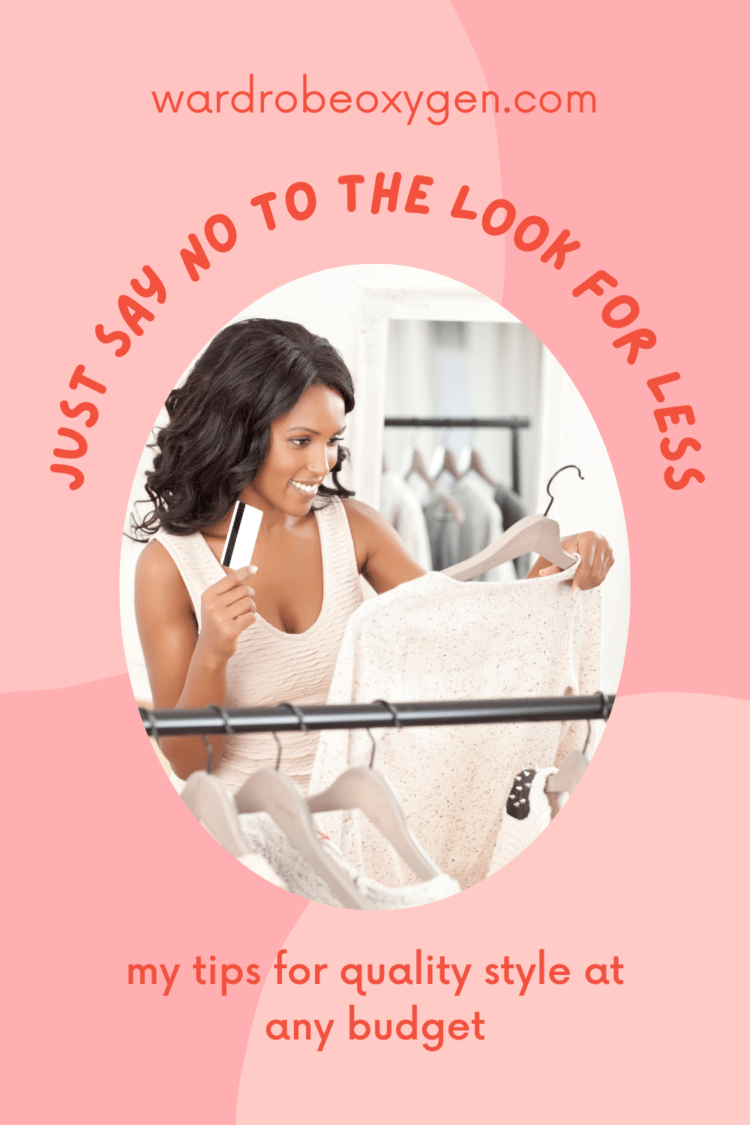
And This is Why I Don't Recommend the Look for Less
Style doesn't come from what (or who) you wear, but how you wear it. Style also doesn't come from how full your closet is, but how thoughtfully you shop for what you wear. You can be the most stylish person in a room with a closet of only ten items, if those ten items fit your body, fit your lifestyle, and are made of the best quality you can afford.
Influencers, style “experts,” and magazines that create the look for less are rarely looking deep into what they are selling. They are focusing on the quick fix, the one outfit, versus a life with the garment. It may look great on a TODAY Show segment or in an Instagram photo, but it's less likely to look great IRL and more likely to be donated after a single season.
A bit of a novel, but I hope you understand now why I don't recommend the look for less. You deserve clothing that works as hard as you do, is as thoughtful as you, and is of the best quality you deserve. You don't need the look for less to look like a million bucks.
This post was originally written in 2015 but updated for current retailers and information.

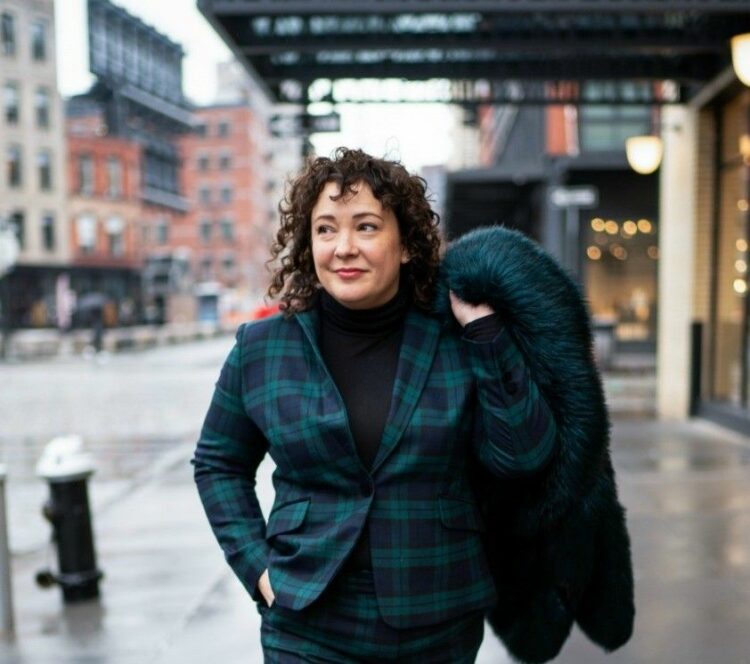
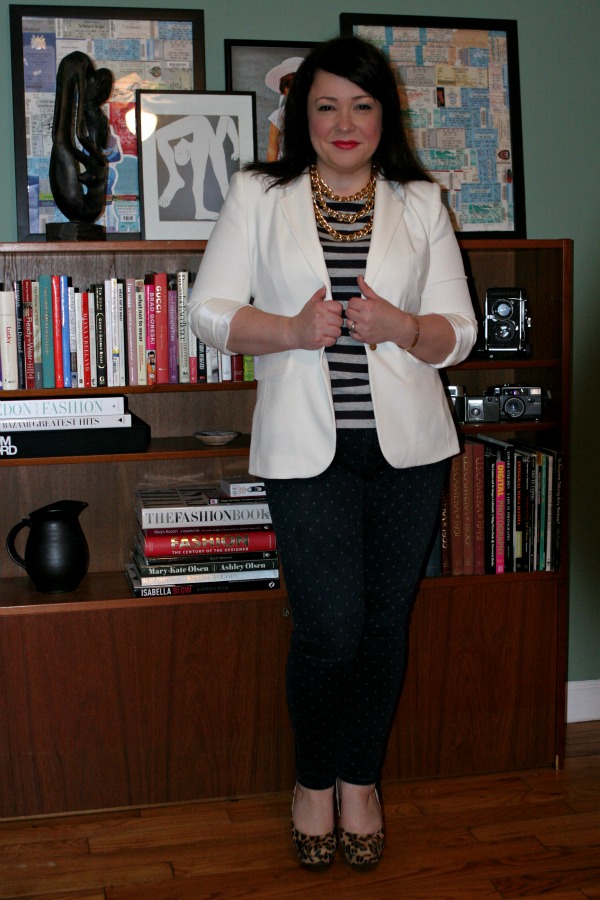
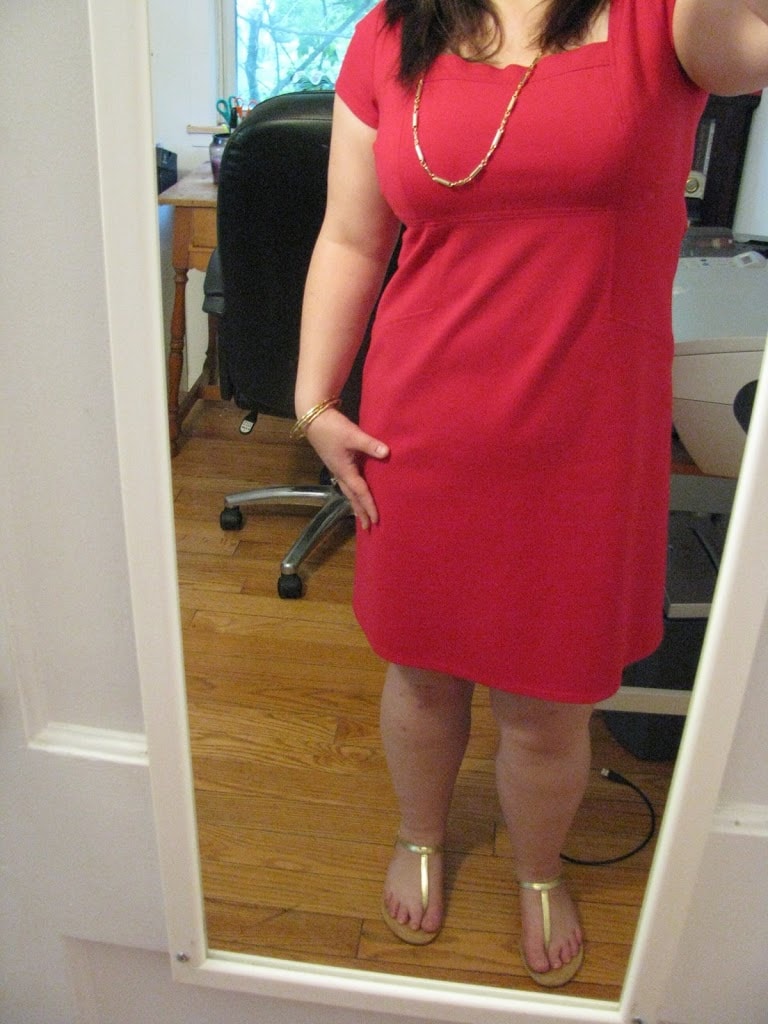
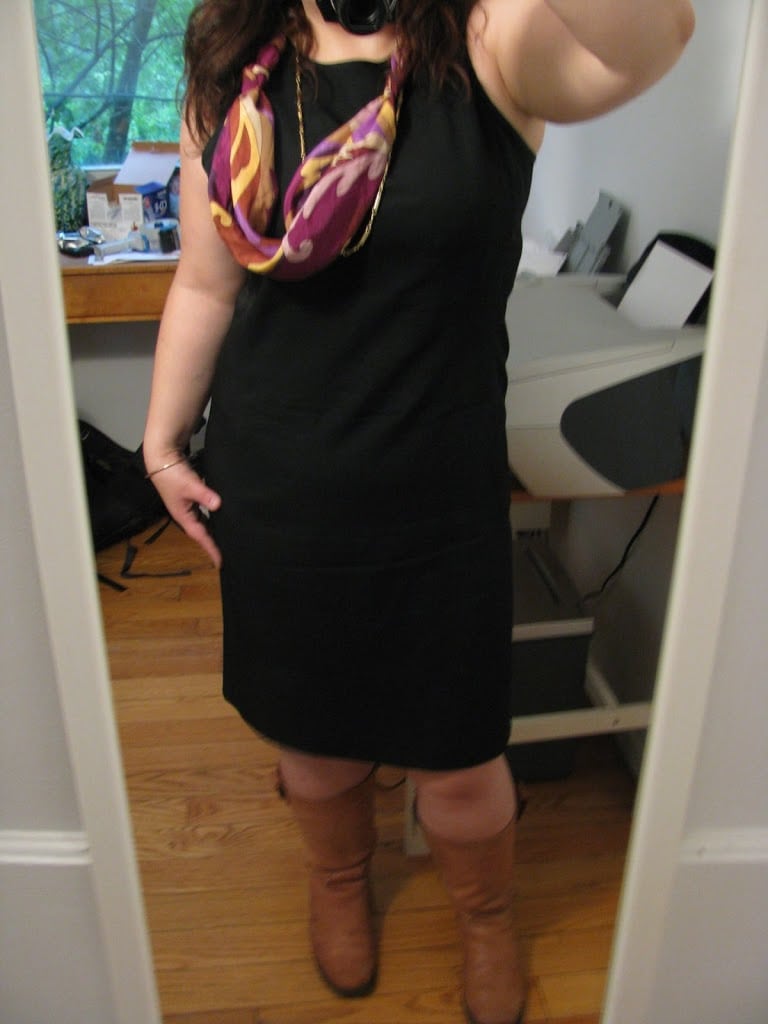
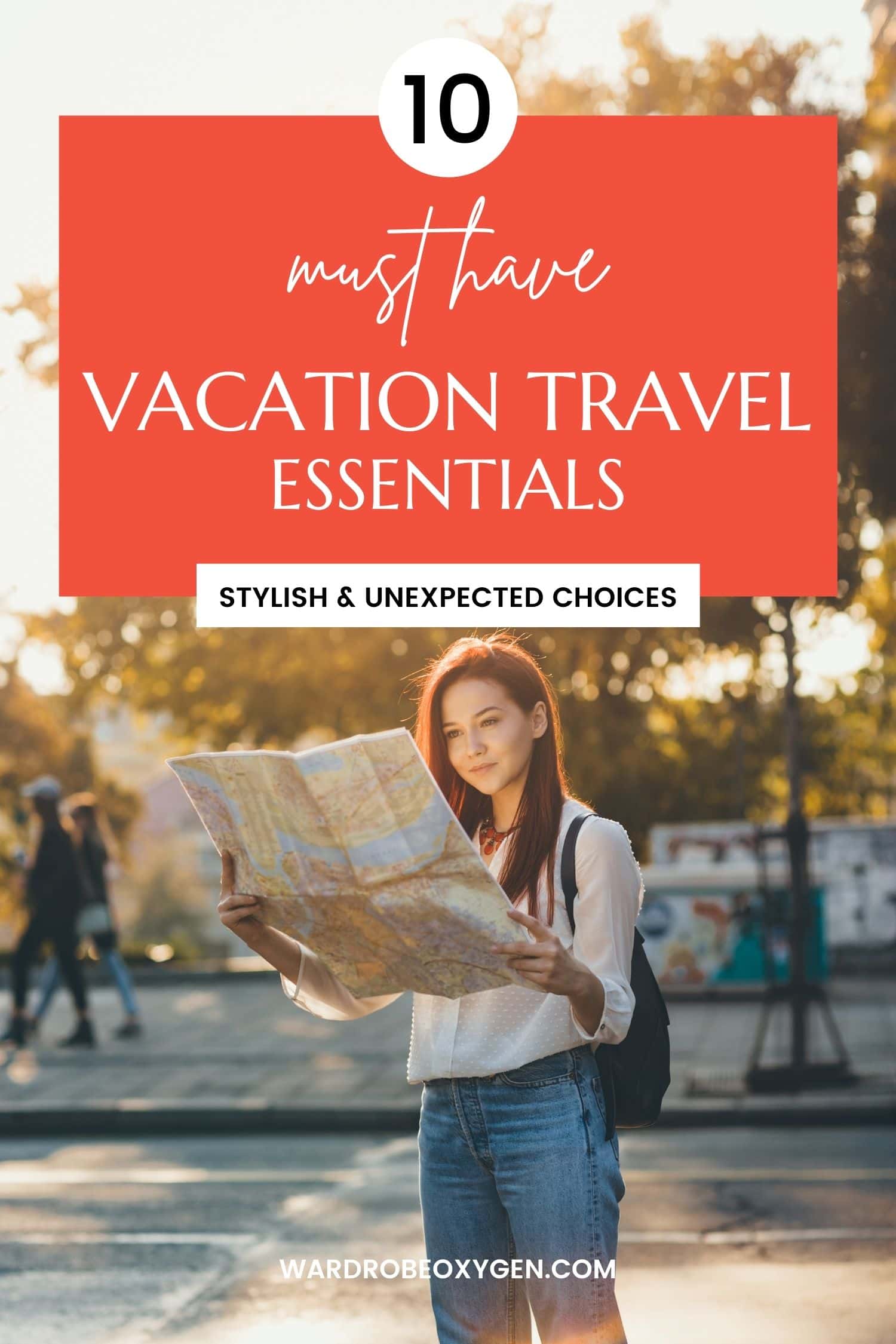
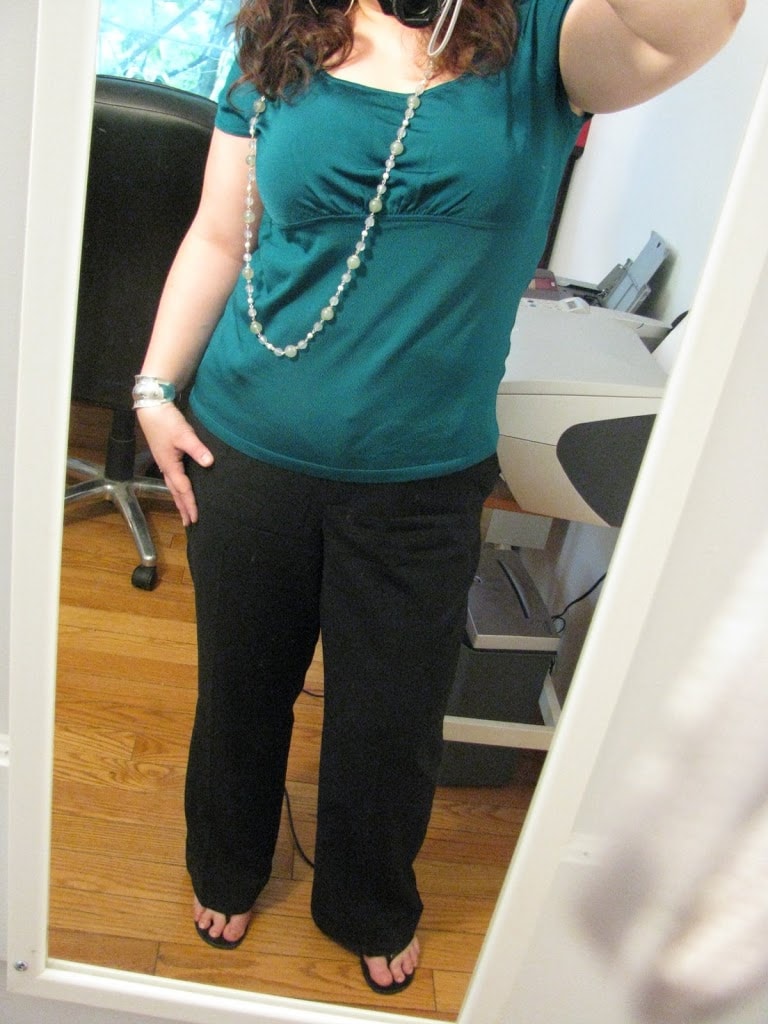
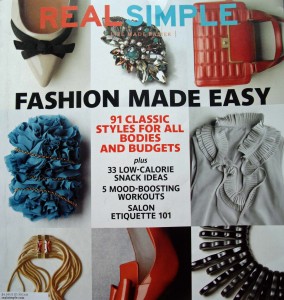
Love this post! So informative. One of the best things I started doing was learning about fabrics so that tip has saved me so much money by keeping me from buying something that I know will feel strange on my skin. I’ve learned great things about clothing and what I like from reading your blog. My closet is slowly becoming the best representation of me in clothes!
Thanks for pointing out the differences among these blouses. When I went back to work in a very conservative environment a couple years ago, I was shocked at how expensive blouses had become—$295 was on the low end of many things I liked! But I’ll use your pointers to look for details in my price range.
I like the idea of quality over quantity, but when your weight fluctuates like mine does, it’s not easy to keep a piece for 10-15 years. I have a couple coats that have served me well, but it’s like I have to have a thinner and a heavier wardrobe!
Finally, a “discount” site I like is Yoox—it can still be very expensive, but it covers a wide range of prices. They carry some beautiful Italian lines, and Italian clothing seems so much more size-consistent to me. Rarely does a 46 disappoint me, but as you said, Alison, I can try on ten size 12 jeans and have them all fit me differently!
My favorite way to get “the look for less” is to hit up thrift shops, starting with small ones and then hitting up larger stores that require more time investment. I volunteer with a small nonprofit thrift shop in Silver Spring and am always amazed at the pieces that get donated, sometimes still with tags. Chico’s, Lands End, Ann Taylor, and other really good brands are now part of my wardrobe but for only a few bucks each (I think the top price I’ve paid was $10 for an amazing vintage dress that I wear all the time now). Plus, I feel better not adding to the waste of manufacturing new clothes by buying clothes that already existed.
Not to say that I never buy new, but I try to check out thrift stores first.
Definitely agree! “Buy less, and buy with care” love this! There are so many ways to save on quality pieces – sales, Nordstrom Rack (like you mentioned), flash sale sites. I’m glad you won’t be doing these types of post 🙂
so true.
Great article with so many details to think about! Sometimes I have a hard time figuring out what pieces are worth the investments, but I’m going through a slow learning process. This article definitely helps a lot.
I think this goes along with the greatness of having a Gwynnie Bee subscription, too! I’ve been a subscriber for three years (since your very first post about the company) and I’m able to combine the variety of those pieces with some of the more expensive classics in my wardrobe. Being 6 feet tall and a size 18/20 means most of my classics come from Lands End, BUT I know those sturdy ponte knit dresses are flattering and going to last for many seasons. I love this post!
Agree! I love that I can buy basic, classic clothing but switch it up with funky prints and fun silhouettes. And when I tire of them, send them back for more!
I love Land’s End! I buy all my work shirts and basic t-shirts from there. Their clothes last for a long time and can handle how hard I am on my clothes.
YES YES YES – 100% agree with this post 🙂
I love this idea in theory, but I find it hard in practice – even the so-called “classics” seem to change from season to season! What are the classics anymore – do you have a recommendation? Thanks!!
The classics really are up to you. I know, annoying and vague answer, right? 🙂 I’ve gone through trying to buy what people call classics and after a year hate them or they seem dated, dowdy, wrong. I started looking in my closet with what I wore year after year and defined my own. Straight fit jeans, one-button blazers, moto-inspired leather jackets, ponte dresses with a tailored but not tight fit, printed maxi dresses, merino v-neck sweaters, pointed-toe pumps and ankle boots. Even if the moto jacket is no longer trendy in three years, I feel confident still wearing it because it defines me. Find the length of skirt, cut of jeans, style of shoe that feels right to you and buy the quality you can afford. Some seasons it may be tough to find what is right, but other ones you’ll be able to stock up.
Loved the post! It actually is like that most of the time: I often think it would make sense to save money and get a better item which would world and which I’d wear a lot instead of getting a cheaper one right now which would not meet my expectations and would be left tossed in the drawyer for ages. It is even more evident with shoes and bags. In the last two years reading your blog I’ve got on sales really good items which I love and which look great and make me feel good and comfortable. In these terms planning is the key: I make a list of things I need/want to bye and hunt them and then wait for sales if they are still available. If not, there’s almost always a valid alternative.
I’d like to know more about how to tell if shoes are resole-able and if a fabric will release stains. What if I buy something expensive – but I stain it – it’s the worst feeling.
I have resoled shoes from Payless; if they fit and are comfortable and you like them enough to have them last another season, a resoleing is usually cheaper than a new pair of shoes, and you’re insuring your “new” shoes will be exactly what you desire. As for fabrics releasing stains, I find synthetics are usually the ones that won’t let stains go more than natural fabrics (cotton, silk, wool, linen, etc.). I do a mix of peroxide and Dawn detergent (http://www.wardrobeoxygen.com/2008/12/stain-removal-recipe-for-success.html ) and have used this on most every fabric in my closet (except cashmere and anything beaded; I’ve even done it on blazers and dry clean only pieces as a pre-treat before taking to the cleaners).
Allie,
Wonderful post! I agree completely and I learned some new information about retail.
I’ll chime in with a Lands End vote also. I think they do an excellent job of balancing all the elements that you talked about Allie. I think Lands End has good choices for young, middle aged, and old ladies.
Chris
And this is why I sew 90% of my wardrobe. I can’t always justify spending money on high-end items. However, I am dissatisfied with the quality found in many stores. I can make items with beautiful fabrics for a fraction of the price of high-end items. I can customize the fit to get a flattering look. And I would boast that my sewing is almost as good, if not the same as those high dollar items.
Excellent article. I write the Ageless Beauty Endless Spirit blog, and am often asked why I don’t recommend lower-priced, similar items. Some time back, I posted a response, using jeans as an example. Your article goes into greater detail.
Great post Allie. I really like how you pointed out the details of why the cheaper blouses were of lesser quality. The older I get the more I look at the quality of the garment I’m purchasing and consider how much wear I’ll really get from it. The ethics are starting to coming into play as well. John Oliver did a great piece on it awhile back. Keep up the great work!
I love this post, Allie. It really breaks down how to judge what is well made and worth the price. I’m really enjoying the information posts you have done recently. (Off topic, but please please do a capsule wardrobe using the upper end of the plus sizes. I want to have a classic, well put together wardrobe, but I find it difficult with the choices for the larger plus sizes.)
What an excellent article thank you. I am at a stage where I too want to pare down my wardrobe and start buying quality pieces over the three wardrobes of cheap clothes I currently have. The few quality pieces I do own are far superior, and are a pleasure to wear. I need to change my attitude when shopping and you have helped, thank you, Jenny x
Great informative article Allie. Thank you. Much shopping strategy comes down to discipline and patience; things that come with time. I guess that’s why Charlotte Russe and Forever 21 cater to younger women.
As someone who sews and pattern-drafts, I have been singing this tune for years and years. There’s a limit to how extensively you can mechanize clothing manufacture. It will always involve at least some degree of human labor, which means there is a limit to how low one can ethically drive down the price.
I think ‘ethically’ is the key word there, and what more people should be aware of/care about/be willing to spend for.
(Also, the ethically-made clothing should come in sizes larger than a large, but that’s a separate discussion altogether)
Allie, this is so on the mark — I totally agree with your philosophy and reasoning, and applaud you for clearly articulating why you aren’t a fan of the “look for less” type of post. This is the first time I’ve commented, btw, although I’ve been reading your blog for years. Thanks for all the good advice and interesting outfit posts. 🙂
I am so glad you reached out and commented, thank you Heather! <3
I agree with all you have said. Quality is worth the investment. I still have pieces in my wardrobe that I have had for over 10years and they still look good. I don’t feel comfortable in cheap polyester.
Absolutely 100% agree. I have pieces in my closet that are 10 and 15 years old. Pricey at purchase, priceless over the life of the garment. And throwaway fashion is horrible for the environment, besides.
One thing I have noticed is that low-end blouses seem to have lost their collars.
I’m always on the look-out for blouses with collars because I like the look of a collar under a sweater, and they’ve become harder to turn up lately.
Hmm. My only issue with not having a drawerful of things is that I sweat, a LOT. And this is DC — everything gets gross in the summer (and for me, the spring and fall too!). My things need to be washed twice as much as my husbands’. So, there’s a balance…I buy nice things that will be worn indoors, but for jeans that I wear every day right now? I need 3-4 , because things at LEAST need a day or three off between wearing, plus more time for washing. And laundry more than once a week just ain’t happening 🙂 I’d love how to deal with this issue!
I hear you on that (and my constant bottle of Certain-Dri on my nightstand would agree). I love NYDJ but they’re pricey so I look on Poshmark and 6pm and get them on sale. I loved the old version of Old Navy vintage v-necks so I bought 4 of them in the same color. I have the Gap Real Straight jeans in faded, distressed, and two in rinse because I found a second pair on clearance. I’ve bought in bulk at Lands’ End when they have sales; I have a matte jersey tank from them in a print and two in black so I have it when the others are in the wash. The plus to buying something that’s really good (and good is at any pricepoint, it doesn’t have to be James Perse) is it will survive all those washings so you don’t have to replace your wardrobe each season!
I can’t help with any suggestions for jeans, but my daughter has hyperhidrosis and swears by these t-shirts: http://www.thompsontee.com/women.html
She uses them in the winter under sweaters, even button down shirts and polo shirts. She says they’re not too bulky, they protect her clothes and she’s not left with huge sweat stains under the arms.
I raced right over there to look, and their sizes are laughably small. What is UP with that?
There is a great product I once used called Drysol. It is (or was) Rx only and prescribed by my dermatologist. It can actually burn the skin if not used according to directions. I share from experience because I have a habit of ignoring directions. I literally sweated through tops to my jackets. I ruined many shirts and even jackets that way. So give it a try. It will save you money and discomfort in the long run.
Thank you, good food for thought.
I appreciate your inclusion of ethical manufacturing as a decision-making factor.
I plan to have more posts on this subject in the future 🙂
I think dropping the look for less happens once you leave your 20’s. I swear once I turned 30 (now I’m 37) I was like oh I only wear cashmere sweaters because I want to invest in something that looks and feels good. I’d rather have 3 amazing sweaters than 12 crappy ones. I do try a trend sometimes and go for the cheaper to see if I like it before I drop the big bucks. And I knit and try to save just to buy the best yarn to make it worth the project. Totally agree with you on this one.
I think a few years ago you wrote a similar comment regarding knock off scarves. Something along the lines of ‘don’t buy a fake McQueen, just buy a different accessory in your price range.’ Since then I’ve really noticed how much the ‘look for less’ suggestions (scarves, shirts, etc) always end up looking cheap and sloppy, so this post really brings that home.
Insightful and educational post — thank you.
Standing ovation for this post!! You’ve explained this throroughly and brilliantly.
Great post. So much to think about there. The information about how high they stack the material when they cut it answers so many questions!
This was a very good post. Full of interesting information and advice.
I think that you’re right (in that the look for less = a crappy investment for less quality), but at the same time budget impacts decisions. For example, I won’t be buying a blouse with a neck-tie because I don’t think the fashion will hold up, and I seriously absolutely no-way can afford 300$US for a blouse.
And, on a personal level, while I would love to find ethically-made clothing that fits me and that I can afford, it’d be great if companies who make such clothing started marketing above an L. I would spend SO MUCH on Everlane tshirts if they came in XL, no joke.
If you’re on a budget, you shouldn’t be buying tie-neck blouses. It’s just not a smart move financially. And YES YES YES to the larger sized ethical clothing! Stay tuned, I have a post coming in a couple weeks that delves into ethical fashion and I hope to have more in the future that share ethical brands that go above a Large!
Ah, the lure of the look for less. Makes a great blog post but in the long run, doesn’t really go with the “Buy less but buy better” theme I’m trying to follow. It’s hard to resist the lure of a bargain, but as you point out, is it really a bargain if you only wear it a few times before it looks shabby? This is why I’m on a shopping moratorium.
I second Lands End. I always thought they were an older lady brand, but as a early 30s girl I am loving tons of items from there. And there’s no reason to pay full price! They have 30% off sales all the time and it’s ridiculous the quality difference between a Lands End tee and an Old Navy tee. If you’re on the younger side of their clientele, just read the reviews to see what the young girls say and go from there.
I so want to love Lands End, but all the items I’ve tried just don’t fit someone who is broad shouldered with a narrow waist. I’ve accepted that they cut for a slim-shouldered pear shape, and turned my attention to their shoes! I have a pair of Lands End canvas wedges that are at least three years old, but you can’t tell because the stitching hasn’t pulled out and the rope detail on the wedge was very well glued. I give them a seasonal scrub with borax to keep them bright and they just keep going.
Have to second Lands’ End shoes! I have hiking boots and pumps, flip flops and swim shoes and they’re all so well constructed and last forever!
I’ve bought several pairs of shoes from Land’s End and they never quite work. i think they are always too narrow.
I like classic looks Land’s End has but their clothing rarely fits me as well. They cut their shoulders two sizes too small, they are short-waisted and the sleeves are too short even in tall sizes (I am size 6 Tall, 5’10 1/2″).